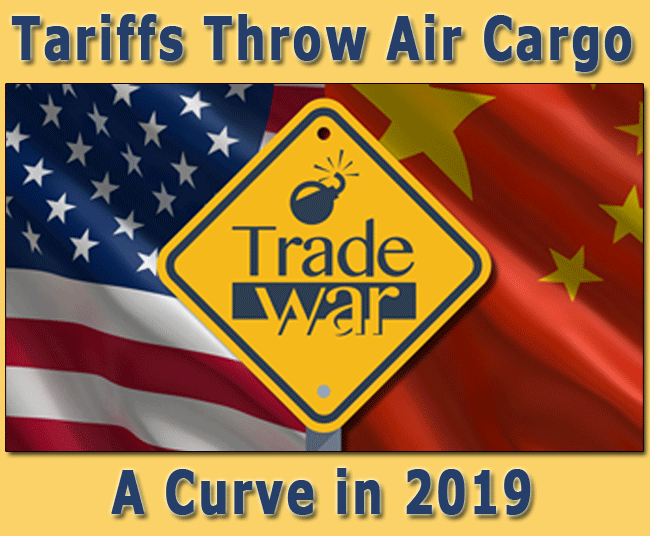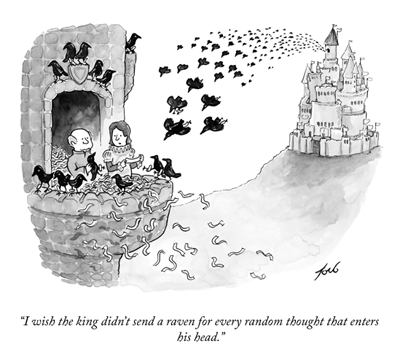
Shippers
planning for the summer peak season received a curve ball from American
President Donald J. Trump earlier this month.
With only a few Presidential tweets of
warning, the U.S.-China trade talks that optimists hoped would bring
an end to confrontation and protectionism, yielded an escalation instead
as the U.S. raised tariffs on $200bn worth of Chinese imports from 10%
to 25%.
Trouble With The Curve
As global markets dipped, the U.S. threatened
even more tariffs covering all remaining goods imported from China –
valued at approximately $300bn. Beijing duly retaliated, announcing
it would raise tariffs to as high as 25% on more than 5,000 U.S. products
starting June 1.
“The escalation brings U.S.-China
trade negotiations into uncharted territory,” said an analyst
from Nomura, the Asia-headquartered financial services group.
“The U.S. had postponed raising
tariffs twice after the December 2018 Trump-Xi summit and ensuing negotiation
period, as both sides appeared to be making steady progress towards
an agreement,” Nomura said.
Economic Downfall
With no agreement, the economic impact
is expected to be substantial. “Economic policy uncertainty in
China and the U.S. has eased this year from very high levels in Q4 2018,”
said Nomura.
“Delays in reaching an agreement
and a return to tit-for-tat trade protectionism could lift this gauge
back to near record highs, which could hurt business confidence and
investment.”
T he almost overnight implementation of
the U.S. tariff hike left no time for shippers to charter aircraft and
beat the import deadline.
Shah of Flexport Tweets A Flyin’
“This happened far too quickly for
shippers to react much,” said Neel Jones Shah, SVP and Global
Head of Air Freight at Flexport.
 “The tweets started flying on Monday
for a Thursday midnight [9 May] implementation.
“The tweets started flying on Monday
for a Thursday midnight [9 May] implementation.
“Even if cargo was ready, the ability
to get it out of town prior to the tariffs going into effect would be
tough.
“There was also no time to schedule
ad hoc charters.”
Even so, rates to North America spiked
last week across the board. On May 13, Hong Kong-U.S. rates had risen
to $3.83 per kg from $3.42 per kg on May 6 and the $3.19 per kg 2019-low
recorded on March 11, according to TAC Index.
Insta Tariffs
“I can’t see this linked to
a spike in demand given the tariffs were put into place very quickly,”
said Peter Stallion, an air cargo derivatives broker at Freight Investor
Services.
 “Rates
to Europe have dipped slightly, but nothing significant.”
“Rates
to Europe have dipped slightly, but nothing significant.”
After the strong surge and with so much
volatility, Stallion said that forwarders should consider reducing their
exposure. “This is exactly the sort of situation we like to frame
as completely avoidable should forwarders and carriers take out positions
in the paper derivatives market that hedge their exposure,” he
said.
“My key message is that all of the
forwarders engaged in Asia-U.S. air and container trades can hedge in
the paper market immediately.”
So while forward markets look strained
by volatility, the latest after-the-fact volume data were more prosaic
- March saw the expected post-Chinese New Year month-on-month bump,
but overall first quarter volumes were a disappointment.
IATA Numbers Up
IATA revealed that demand, measured in
freight ton kilometers, increased 0.1% year-on-year in March 2019. “While
this is a significant improvement on the 4.9% contraction in February,
in seasonally adjusted terms, demand is still down 1.5% over the past
year,” said IATA.
Freight capacity rose by 3.1% year-on-year
in March, while IATA noted that capacity growth had now outstripped
demand growth for 11 out of the last 12 months.
“Year-on-year demand for air freight
edged back into positive territory in March with 0.1% growth,”
said Alexandre de Juniac, IATA's Director General and CEO. “After
four consecutive months of contraction, this is an encouraging development.
But the headwinds from weakening global trade, growing trade tensions
and shrinking order books have not gone away.”
World ACD Drops Load Factor
Meanwhile WorldACD said the cargo load
factor dropped by 1.8 percentage-points year-over-year in March, but
rose by 2.6 month-over-month. “With air cargo volumes at their
lowest in February 2019 [due to Chinese New Year], the month of March
was bound to show impressive month-over-month figures, but even a large
increase of 25% was not enough to save the first quarter of the year,”
said WorldACD.
“Q1 2019 ended with a year-over-year
decrease in chargeable weight of 3.1%.”
IATA Says Headwinds Gaining
With global trade volumes down 1% over
the past year, IATA said significant headwinds faced by air cargo included
weakening global economic activity and consumer confidence. The export
order component of the global manufacturers Purchasing Managers Index
(PMI) has also indicated falling global export orders since September
2018.
“Industry confidence regarding the
outlook, however, remains relatively upbeat with only 13% of respondents
from IATA’s Business Confidence Survey expecting to see a decrease
in freight volumes in 2019 compared to 2018,” added IATA.
Between Q4 2018 and Q1 2019, WorldACD
said there had been a worldwide drop in kilograms of 10.3% with the
origins North America and MESA suffering least (-3.7%), but Asia Pacific
most (-16.8%).
Trump's Trade War
“China and Hong Kong taken together
decreased by more than 20%, double the worldwide drop,” reported
World ACD. “Zooming in on Trump’s Trade War, volumes from
China to USA fell by 21% between Q4 and Q1, whilst USA to China fell
by 12.5%.”
Tariffs Throw Cargo A Curve In 2019
The rise in U.S. and China tariffs that
went into effect in May are expected to further dampen confidence and
volumes.
“Even if negotiations get back on
track relatively quickly, it seems likely that the events of the last
week have more or less permanently increased uncertainty,” warned
Nomura.
“This is likely to have a long-lasting
effect on financial markets, business confidence and investment.”
SkyKing




 Vol.
18 No. 32
Vol.
18 No. 32 Vol.
18 No. 33
Vol.
18 No. 33